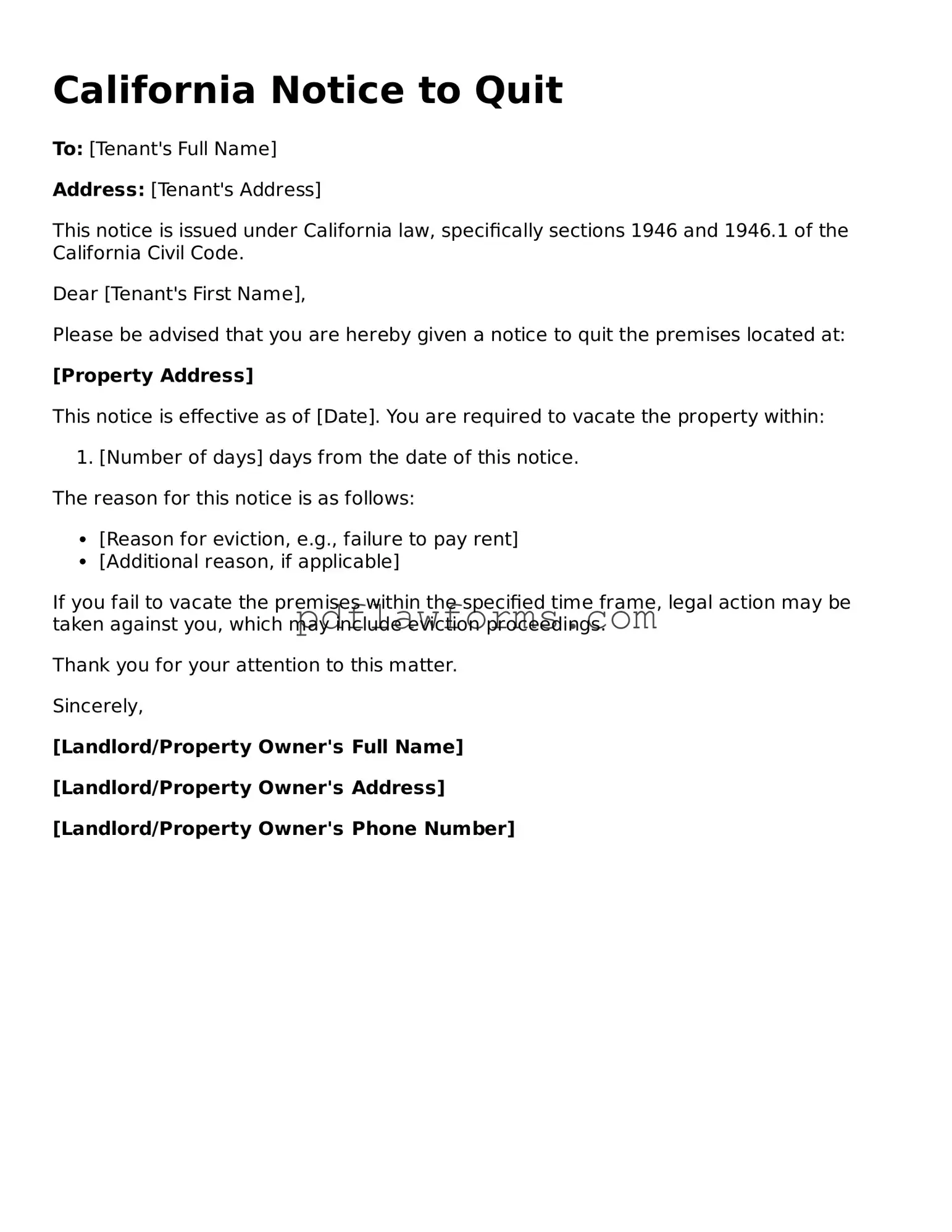Completing the California Notice to Quit form can be a straightforward process, yet many individuals make common mistakes that can lead to complications. One frequent error is failing to provide the correct address of the rental property. This detail is crucial, as it identifies the location involved in the tenancy. Without this information, the notice may not be considered valid.
Another common mistake involves incorrect dates. The form requires specific dates for the notice to be effective. When individuals either forget to include these dates or write them incorrectly, it can create confusion and may render the notice unenforceable. Ensuring that all dates are accurate and clearly stated is essential for the validity of the document.
Some people neglect to sign the form. A signature is not just a formality; it signifies that the landlord or their representative is officially issuing the notice. Without a signature, the recipient may question the authenticity of the notice, leading to potential disputes down the line.
Additionally, failing to specify the reason for the notice can lead to misunderstandings. While not always required, providing a clear reason helps clarify the situation. This transparency can prevent unnecessary back-and-forth communication between parties involved.
Improper delivery of the Notice to Quit is another pitfall. California law outlines specific methods for serving this notice, such as personal delivery or mailing. Ignoring these guidelines may result in the notice being deemed ineffective, delaying the eviction process.
Some individuals mistakenly believe that a Notice to Quit is the same as an eviction notice. This confusion can lead to improper expectations. While both documents are related to tenancy issues, they serve different purposes and have distinct legal implications.
Inaccurate information about the tenant can also create problems. It’s vital to ensure that the tenant's name is spelled correctly and that any additional tenants are included. Mistakes in this area can complicate legal proceedings if the situation escalates.
Another error involves not keeping a copy of the completed Notice to Quit. Documenting the notice is important for future reference. If disputes arise, having a copy can provide evidence of the notice and its delivery.
People sometimes overlook the importance of checking local laws and regulations. Each city or county may have specific requirements regarding the Notice to Quit. Failing to comply with these local regulations can lead to invalidation of the notice.
Lastly, rushing through the form can lead to multiple errors. Taking the time to carefully review each section can prevent mistakes that may cause delays or complications in the eviction process. Thoroughness in this matter can save time and effort in the long run.
